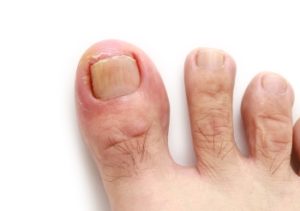Do I Have an Ingrown Toenail?
 Ingrown toenails can be quite painful, and for some patients, they can be dangerous. Podiatry specialists near Chicago recommend that patients with diabetes be particularly cautious when trimming their toenails, as they are at a higher risk of poor wound healing, infection, and even the need for amputation.
Ingrown toenails can be quite painful, and for some patients, they can be dangerous. Podiatry specialists near Chicago recommend that patients with diabetes be particularly cautious when trimming their toenails, as they are at a higher risk of poor wound healing, infection, and even the need for amputation.
Even if you aren’t diabetic, you should see a foot doctor promptly if you suspect you have an ingrown toenail.
The most obvious signs of an ingrown toenail are localized pain, swelling, and redness around the toenail. In most cases, the big toe is affected. Upon closer inspection, you’ll notice that the end of the toenail has begun growing into the flesh next to the nail.
Ingrown toenails can become infected, especially in the germy environment of a sweaty sock. When an infection develops, you may notice some bleeding or oozing pus. The pain may become worse, especially if you press on the area. Your podiatrist can give you an accurate diagnosis and effective treatment options.
